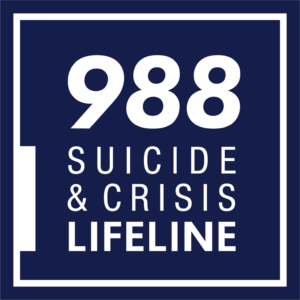
This guide was originally prepared by student fellow Isaac Alter in 2018. It was updated in March 2023 by student fellow Audrey Thibert.
More than 50 international studies have found that certain types of media coverage can increase the likelihood of suicide contagion, the phenomenon of increased suicide rates after a publicized death by suicide or suicide attempt. Headlines, language, images and even the decision to report on suicide can all have an impact on individuals and the general public. Here we’ve gathered the best resources for journalists and other communicators on covering suicide responsibly.
American Foundation for Suicide Prevention
The American Foundation for Suicide Prevention is an advocacy organization that funds research and educates the public on suicide prevention. The Foundation provides journalists with statistics, fact sheets and resources related to suicide, including the resource 10 tips for reporting on suicide.
Reporting on Suicide
Reporting on Suicide is a collaboration between experts in suicide prevention, public health organizations, schools of journalism, media organizations, journalists and Internet safety experts, and includes these recommendations for journalists. Reporting on Suicide also provides recommendations for online media, examples of how to cover suicide, research related to suicide coverage and information on contacting experts.
Johns Hopkins Training on “Mental Health and Suicide Reporting”
Johns Hopkins offers a free, online course, for journalists to increase their understanding of how to report on suicide. The course includes three modules with subjects ranging from suicide statistics to best practices and was created by fellow at Johns Hopkins Aneri Pattani and Professor in the Department of Mental Health at Johns Hopkins Holly Wilcox. The entire course, which takes around 7 hours to complete, can be started at any time and completed at any pace.
World Health Organization
In 2017, the World Health Organization updated their 2008 booklet with resources for media. The booklet was created as part of a collaboration with the International Association for Suicide Prevention. Produced in partnership with professors, doctors and suicide prevention specialists from all over the world, the booklet contains a number of suggestions for how to report on suicide responsibly, as well as resources for finding reliable information on suicide.
Substance Abuse & Mental Health Services Administration (SAMSA)
The Substance Abuse and Mental Health Services Administration, the U.S. Department of Health and Human Services agency in charge of public health efforts to improve the behavioral health of the nation, provides a comprehensive list of resources for journalists to include in articles about suicide. Studies show that providing resources in news articles about suicide can help prevent suicide. The list can be found here.
AP Stylebook
The AP Stylebook advises against covering an individual’s suicide, unless it involves a well-known person or unusual circumstances. AP advises journalists not to detail the methods by which an individual died by suicide. When covering suicide, AP recommends using certain language and avoiding phrases like committed suicide or unsuccessful suicide attempt because the verb commit can imply a criminal act and it should not be considered “unsuccessful” if someone survives a suicide attempt. More information and tips can be found in the stylebook, or in these tweets.
The AP Stylebook has not released updated advice on covering suicide since 2018. More updated resources can be found in the above resources.
